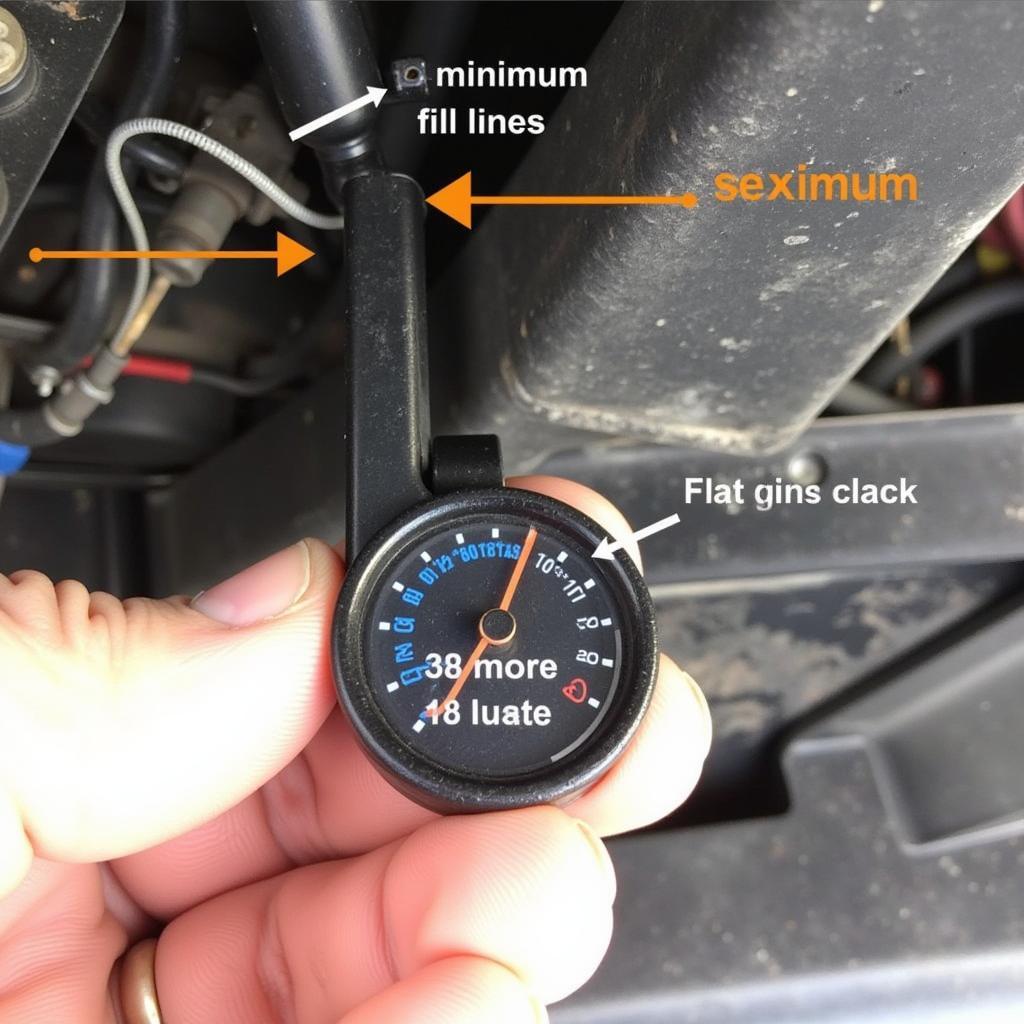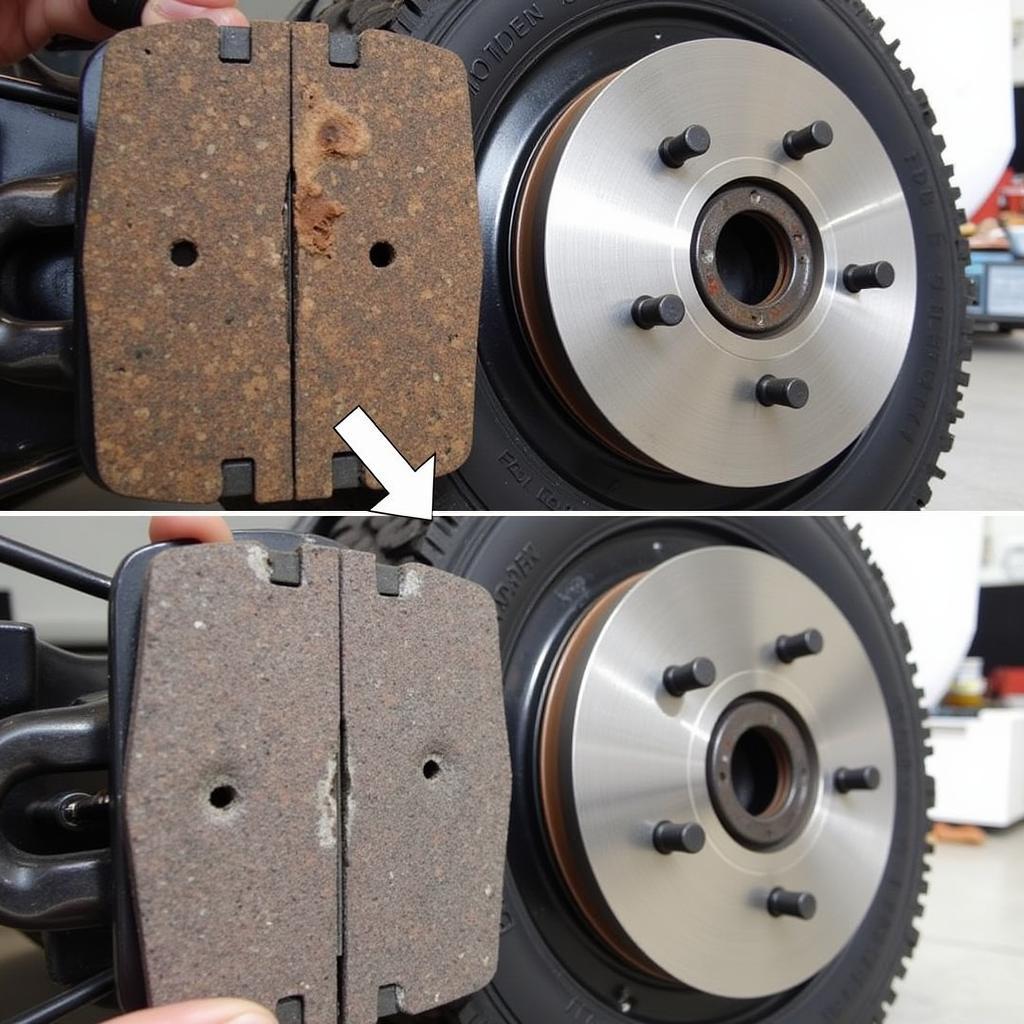The brake warning light on your 1987 Dodge D100 is an essential safety feature. If it illuminates, it signifies a potential problem with your braking system that requires immediate attention. This article offers a comprehensive guide to diagnosing and resolving the issue, ranging from simple checks to more complex solutions.
The most common reasons for a 1987 D100 brake warning light to illuminate are low brake fluid, a faulty brake light switch, or worn brake pads. However, other potential causes include issues with the ABS system, parking brake malfunction, or a problem with the master cylinder. Understanding these various possibilities is the first step towards effectively troubleshooting your brake warning light.
Common Causes of a 1987 D100 Brake Warning Light
Several factors can trigger the brake warning light on your 1987 D100. Identifying the root cause is crucial for effective repair. Here’s a breakdown of common culprits:
- Low Brake Fluid: This is often the easiest fix. Check your brake fluid reservoir and top it up if necessary. However, consistently low brake fluid can indicate a leak, which requires professional attention.
- Faulty Brake Light Switch: This switch activates the brake lights when you press the brake pedal. A malfunctioning switch can also trigger the warning light. Testing or replacing the switch is a relatively simple procedure.
- Worn Brake Pads: Your brake pads wear down over time, and when they reach a critical point, a sensor triggers the warning light. Replacing your brake pads is essential for maintaining safe braking performance.
 1987 D100 Brake Fluid Reservoir Check
1987 D100 Brake Fluid Reservoir Check
Diagnosing the Issue: A Step-by-Step Guide
If your brake warning light stays on, follow these steps to pinpoint the problem:
- Check the Brake Fluid: Inspect the brake fluid reservoir. If it’s low, add brake fluid to the recommended level.
- Inspect the Brake Light Switch: Locate the brake light switch, typically near the brake pedal. Test its functionality using a multimeter.
- Examine the Brake Pads: Visually inspect the brake pads through the wheel spokes. If they appear thin or worn, they likely need replacing.
 1987 D100 Brake Pad Inspection
1987 D100 Brake Pad Inspection
More Advanced Troubleshooting for a 1987 D100 Brake Warning Light
If the basic checks don’t resolve the issue, consider these more advanced diagnostic steps:
- Check the Parking Brake: Ensure the parking brake is fully disengaged. Sometimes, a slightly engaged parking brake can trigger the warning light.
- Inspect the ABS System: If your D100 is equipped with ABS, a fault within the system can illuminate the warning light. This requires specialized diagnostic equipment to pinpoint the specific issue.
- Check the Master Cylinder: The master cylinder plays a crucial role in the braking system. A leak or internal failure can lead to a warning light and significantly reduced braking performance.
“A thorough inspection of the entire braking system is crucial when the brake warning light persists,” advises John Miller, a seasoned automotive electrical engineer. “Overlooking a minor issue could lead to significant problems down the line.”
Utilizing Remote Diagnostic Services
For complex issues, remote diagnostic services can be beneficial. These services allow experts to access your vehicle’s computer system remotely, identify faults, and even program or install software updates to address certain problems. This can save you time and money compared to traditional garage visits.
1987 d100 brake warning light switch
Why is my 1987 D100 brake warning light flashing?
A flashing brake warning light usually indicates a more serious problem, such as a critical fluid leak or ABS fault. Seek immediate professional assistance.
Conclusion
Addressing a 1987 D100 brake warning light promptly is vital for your safety. This guide provides a starting point for troubleshooting. Remember, if you’re unsure about any aspect of brake repair, consult a qualified mechanic. Ignoring the warning light could lead to serious consequences. Don’t compromise your safety—address any brake issues immediately.
“Remember,” adds Miller, “regular brake system maintenance, including fluid checks and pad replacements, can prevent many warning light issues and ensure optimal braking performance.”
FAQ: 1987 D100 Brake Warning Light
- What is the most common reason for the brake warning light to come on? Low brake fluid.
- Can a faulty brake light switch trigger the warning light? Yes, a malfunctioning brake light switch can illuminate the warning light.
- How often should I check my brake fluid? At least once a month.
- What does a flashing brake warning light mean? A serious problem, like a major fluid leak or ABS fault.
- Should I drive my D100 if the brake warning light is on? No, it’s unsafe to drive with an illuminated brake warning light.
- Where is the brake light switch located? Typically near the brake pedal assembly.
- Can remote diagnostics help with brake warning light issues? Yes, for complex issues, remote diagnostics can be very helpful.
